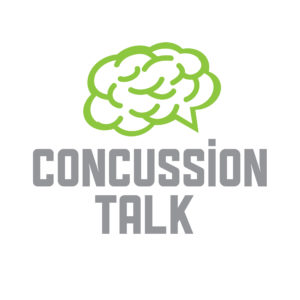My cynical side looks at this and thinks ‘Cheap research meets a company trying to market itself as a community partner’. Then, my practical side thinks ‘Who cares! Good for Toyota! It’s a big investment into an issue I am passionate about, with a ready supply of researchers (at Wake Forest University).’
“It’s important to understand that there’s a limit to how much helmets can do,” Ide continued. “And player behavior, player education, rules changes — all of those things can have as much, or more, of a benefit in reducing the risk of concussion.” “The helmet sits on the skull, and the brain moves inside the skull, and that’s actually what causes the concussion,” The first quote is from Thad Ide, vice president of research and development at Ridell. The second quote is from Mike Lovell, founding director of the University of Pittsburgh Medical Center Sports Medicine Concussion Program. Both quotes are from the Associated Press article: NFL, manufacturers agree there’s no perfect helmet This article is centred on concussions in football, but it’s important to remember that the quotes and much of the information about concussions is true for any sport.
A medical guide to concussions in football Whether or not the author of this article is a doctor, if you think you may have a concussion, the best thing to do is see a doctor. Nevertheless, the article does provide some important symptoms. By no means do the listed symptoms include every symptom. It’s always better to see a doctor.
With the hockey season now in full swing, there has definitely been much more attention paid to concussion with the reminder that it is a brain injury. There is a lot of talk about rules around hitting, strict enforcement of rules and using helmets improperly. Unfortunately, there’s not a lot of discussion about changing the way aggressive play is taught and coach at a young age: Protective gear not answer for concussions, doctors find There doesn’t need to be, nor should there be, less aggression in the game, but even small tweaks to the way hitting is taught and rewarded could change a lot of the troubling outcomes. Young players need to be taught at a young age that the protectie padding and the helmets they wear only reduces the likelihood of injury, it doesn’t prevent injury entirely. So don’t expect to be invincible out there! Hockey is a contact sport, players of any age, size and skill level will be affected by contact. It may knock you off the puck, it may knock you down, you may brush it aside, or it might cause injury, from a sore leg, shoulder or torso, to a brain injury such as a concussion.
It’s good to see that people are discussing concussions, but the comments are geared toward blaming the equipment and mentioning in passing that education is important. There’s no recognition that the esteem in which hockey is held in Canada makes it invincible to criticism about the way it’s taught, coached, and admired. Education key in treating concussion ‘epidemic’
Sports concussions more serious than previously reported The title of this Globe and Mail article says it all. While raising the seriousness of concussions is very important, perhaps equally as important and often overlooked, is the need to tell young athletes who are new to contact sports (or any sport in which concussions are apparent risks) that this will be an issue when participating. I think this would be a more productive way to approach the concussion issue in contact sports. What the NFL and NHL are trying to do is to enforce preciously unenforced rules and tell athletes to change what “contact” means in “contact sports” Obviously, changes to rules are needed and contact to the head should be avoided at all costs, but it’s important that athletes are made aware of the risks before they learn to play and become increasing involved.
Leading to the question posed by this Michael Sokolove article in the NY Times: Should You Watch Football? It was written a week after the slew of concussions on October 17. Nevertheless, the article separates the enjoyment of watching sports from the moral dilemma many are faced with after witnessing violent collisions in the name of competition.

March 8, 2011
Good article, thank you. I just signed up to your blog RSS. http://www.apnatorrents.com/download-the-gathering-storm-wheel-of-time-book-12-pdf-free.html
April 2, 2011
Just keep posting good stuff. http://www.apnatorrents.com/download-daughter-of-joy-brides-of-culdee-creek-book-1-pdf.html
April 5, 2011
Finally someone that actually knows what they are talking about – thank you!
April 5, 2011
Great Post, I love to read articles that are informative and acutally have good content. Thank you for sharing your experiences and I look forward to reading more.
April 5, 2011
Fabulous information, I wish I could be so open minded and creative. Great work.